Nature, My Musical Muse
First published in Sanctuary Cub,
Vol. 45
No. 5,
May 2025
All species use rhythm to sync up, align movements or behaviours with others, and build strong bonds… Our bodies are synced up with the most powerful natural metronome of all – the sun – binding us to millions of life forms. Text by Sahir Doshi.
Monsoon in India is nature’s big music festival. It brings out a star-studded lineup of hooters, cooers, croakers and wing-beaters. Crickets buzz like broken synths. Clouds burst like a thunderous bass drop. Amidst Mumbai’s droning traffic, you can find the Sanjay Gandhi National Park (SGNP), a forest where peacocks pee-YOU, and leopards rumble like rhythmic saws.
In SGNP’s visitor centre, I spotted an Indian tree frog on a railing, looking like he was taking a backstage break from the jungli concert. I couldn’t hear his ribbits, but I could see his throat expand and contract to the beat – like an overworked instrument. Sensing his fear, I moved on, but I kept wondering, what would he say if he spoke human? His words came to me as rap bars… riveting ribbits of rhythm have risen, riveting ribbits of rhythm have risen.
In no time, I was rapping and bopping… to the beat of a frog. I’m certainly not the first person to make nature my musical muse!
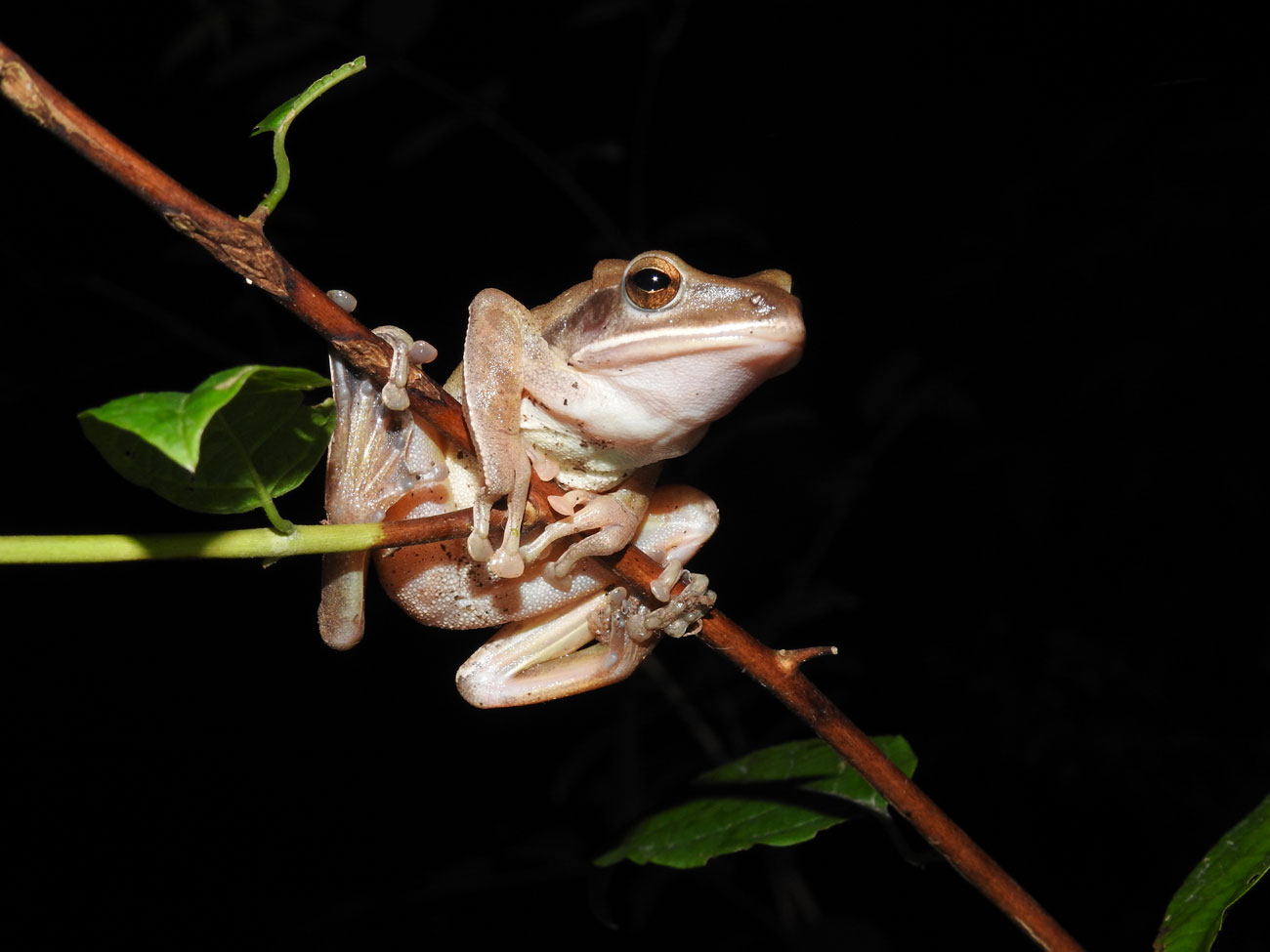
Indian tree frog Polypedates maculatus. Photo: Dr. Raju Kasambe/CC-BY-SA-4.0.
Beat In Music And Beyond
Rhythm is the part of music that deals with timing, pace, and repetition. You can snap your fingers or tap your feet to it. It’s a pattern that makes us dance, or even fall asleep.
Rap music – short for Rhythm and Poetry – is all about rhythm. We rappers create complex lines of poetry or ‘bars’ using a steady beat. Notice how rhyming song lyrics stick with us rather than prose? Our ancestors recognised this and composed scriptures as poems – easier to learn and pass on.
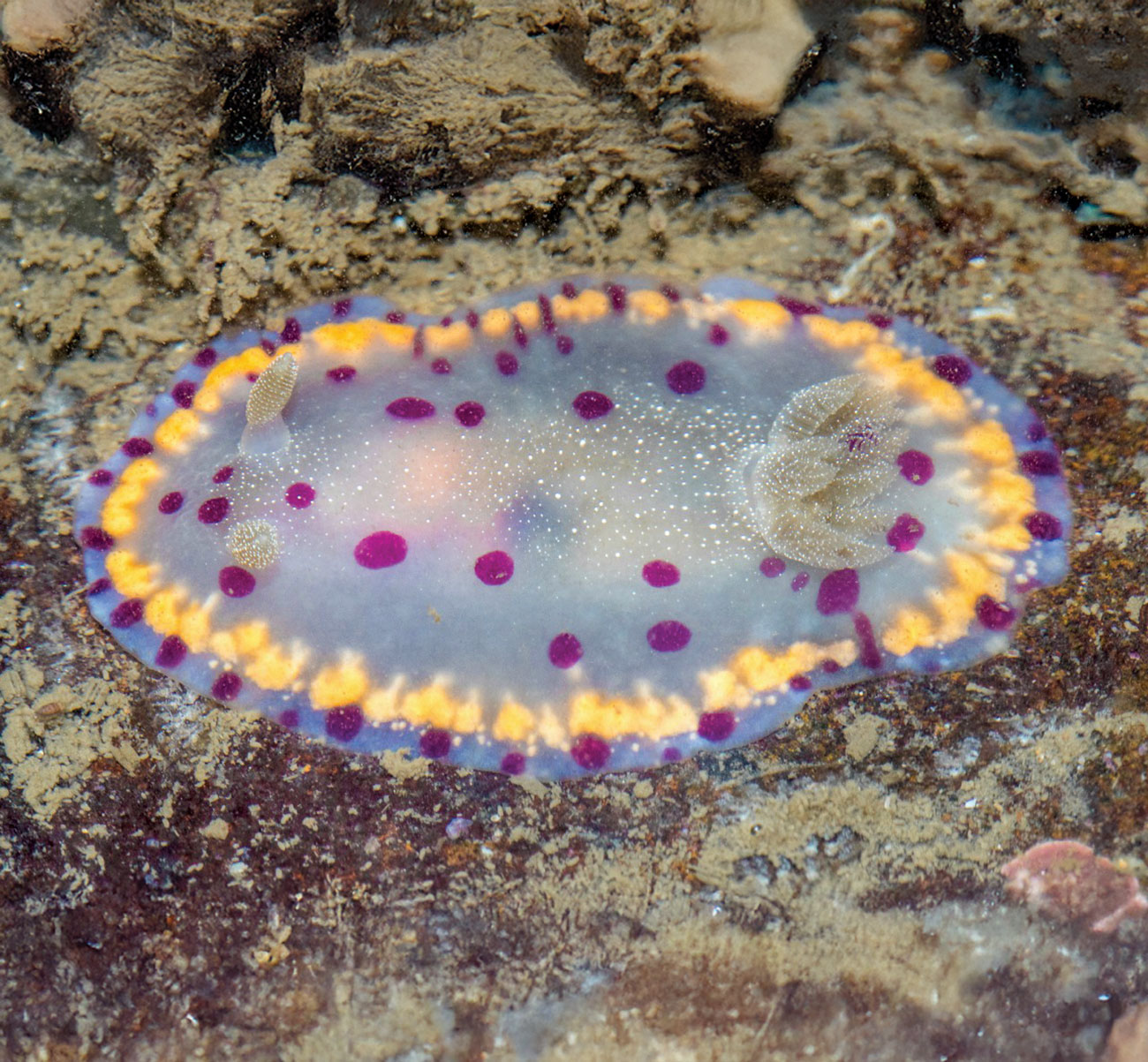
Goniobranchus bombayanus is a species of dorid sea slug from Mumbai. Photo: Shaunak Modi/CC-BY-SA-4.0.
Why do we love rhythm so much? Our animal cousins might give us clues. All species use rhythm to sync up, align movements or behaviours with others, and build strong bonds. Gibbons sing duets in the rainforest canopy, where one picks up the beat where the other left off. Dholes or Indian wild dogs whistle! By spacing out their sounds, they’re able to find each other and stay connected. Bees have an entire language of rhythmic dance moves to convey information within the hive.
Rhythm, it turns out, is everywhere – in our music, our memories, and in the wild around us.
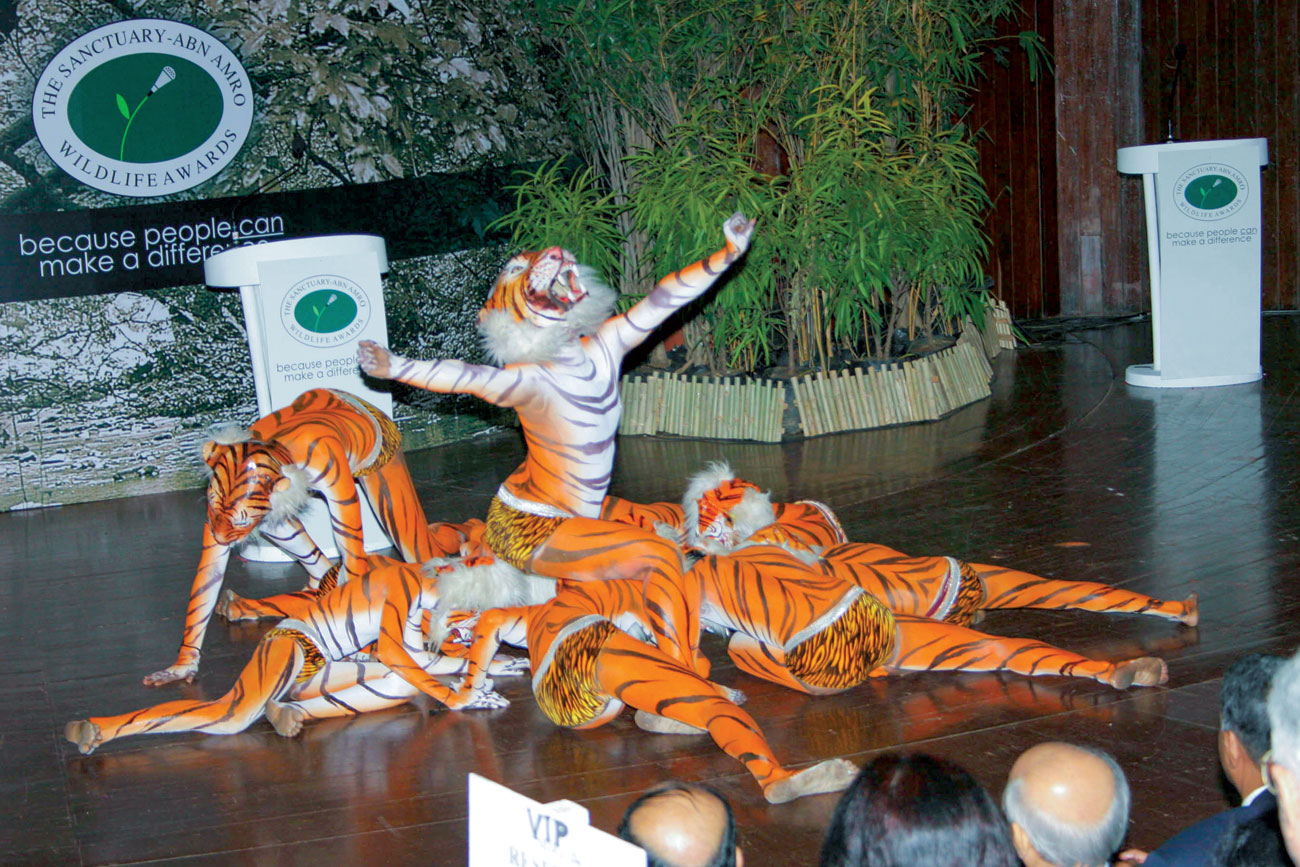
Huli Vesha dancers perform during the Sanctuary Wildlife Service Awards 2007. Photo: Sanctuary Photolibary.
Sense The Rhythm
Here’s the coolest part – there are rhythms in nature that we can sense even if we can’t hear them. Living near the sea in Mumbai, my favourite rhythm to ‘see’ is the flow of the tides. It’s an endless loop of rhythmic motions – waves that gush in and out, and the inundation and exposure of the stretch of shore that we call the intertidal zone.
Then there are all the small rhythmic animal movements that add their elements onto this beat. Gills bloom like plumes on the backs of dorid sea slugs. Moray eels come out of their crevices and gulp water for breath. Sea anemones let their hungry tentacles sway to the tide and catch bits of food. Every tide is a dance party to the music of crashing waves. No band does it better than the barnacles, relatives of crabs that live deep inside shells stuck on rocks and other surfaces. As a tide comes in, their feathery legs emerge from the shells and start beating the water so rhythmically that it drums tiny food particles into their shells to eat! To my mind, they are going mlep, mlep, mlep, a hypnotic rhythm in the dazzling intertidal orchestra.
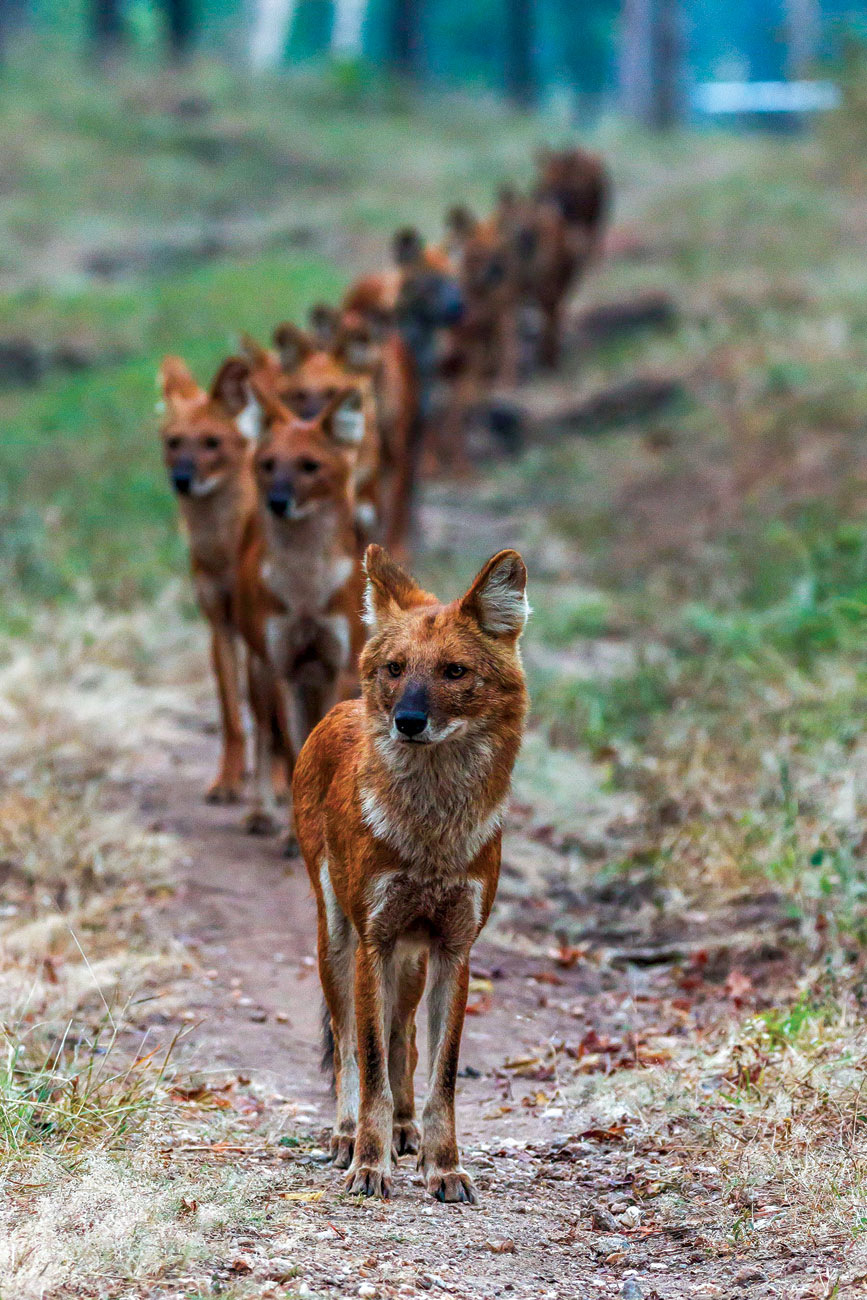
Indian wild dogs communicate with the pack through whistles. Photo: Ukil Angshuman/Sanctuary Photolibrary.
Nothing much for a human ear to hear, but something that a keen imagination can feel.
Rhythm Of Water
~ Hydraulophone is a musical instrument that makes sound from vibrations formed by touching small water jets.
~ Waterphone is a bowed percussion instrument. It has a resonator bowl, rods, and water inside.
~A glass harp is a set of glasses with different amounts of water and is played by running fingers around the rims.
One With The Rhythm
Finally, there are the rhythms we can’t hear or see – or even consciously feel, but we are a part of.
Our bodies are synced up with the most powerful natural metronome of all – the sun. When it rises, our bodies release hormones that keep us awake and active. When it sets, our bodies release a hormone that helps us sleep. This circadian rhythm directly binds us to millions of life forms that depend on the sun for survival.
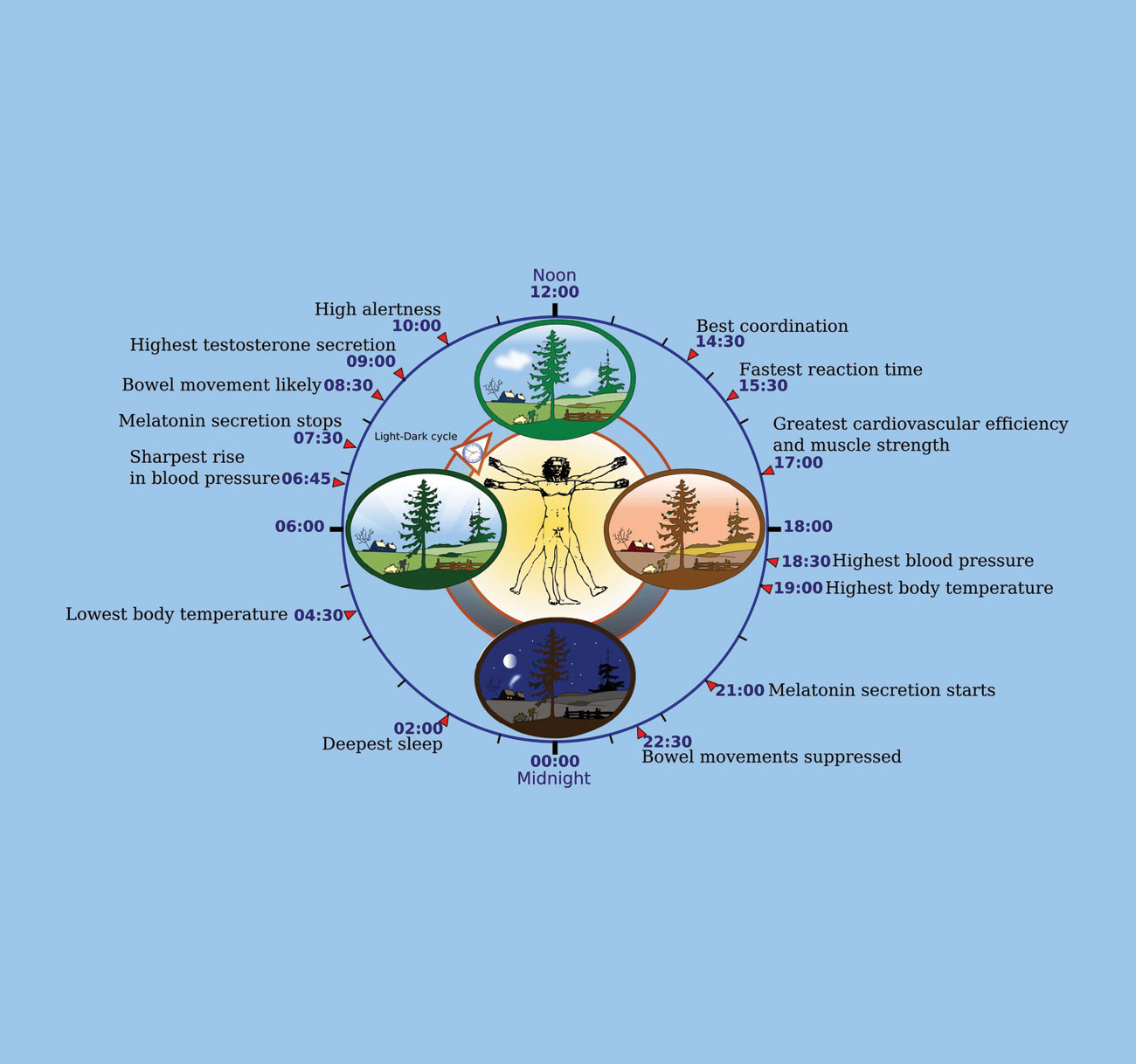
Circadian rhythm pathway in humans regulates sleep, alertness, and health. Photo: Srruhh/CC-BY-SA-4.0.
If you’re a rapper or hip-hop head like me, here’s something to think about. Our rhythms will always draw from the natural world, whether drumming along to the rain-based raga Megh Malhar, dancing to the animal-inspired movements of Huli Vesha, or sampling big cat growls for a song by the Swet Shop Boys.
But what about the poetry part of RAP? That’s where we call on each other to slow down, notice nature’s rhythms, and choose daily to live with compassion and coexist with all living beings. We all need a verse on the beat of the earth.
Sahir Doshi is a wildlife content creator, nature educator, and rapper based in Mumbai. He is also a past Kids for Tigers Ambassador. Today, he is exploring Mumbai’s coastal biodiversity and generating public awareness about it through his music.






